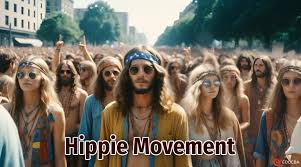

The hippie movement of the 1960s was a vibrant countercultural revolution that challenged mainstream societal values and embraced ideals of peace, love, and personal freedom. Emerging in the U.S., particularly in places like San Francisco’s Haight-Ashbury district, hippies were outspoken in their opposition to the Vietnam War, promoting nonviolence and resistance to militarism. Rejecting materialism, they embraced communal living and sought simpler, more meaningful lives. Psychedelic drugs like LSD became central to the movement, with many believing these substances could expand consciousness and unlock deeper spiritual awareness. This interest in altered states of mind was often intertwined with a fascination for Eastern philosophies, meditation, and the concept of universal harmony.
Music was at the heart of the hippie culture, with artists like The Beatles, Janis Joplin, Jimi Hendrix, and The Grateful Dead providing the soundtrack to the movement. Events such as the 1969 Woodstock Festival encapsulated the spirit of the era, bringing together hundreds of thousands of people in celebration of peace, love, and music. Hippie fashion, characterized by long hair, colorful tie-dye shirts, bell-bottoms, and natural fibers, became a symbol of their rebellion against conventional societal expectations. Beyond aesthetics, the movement had a deep connection to environmentalism, advocating for organic food, sustainable living, and a return to nature. Though the movement faded by the early 1970s, its ethos influenced future generations, leaving a lasting impact on social justice, environmental movements, and cultural expression.